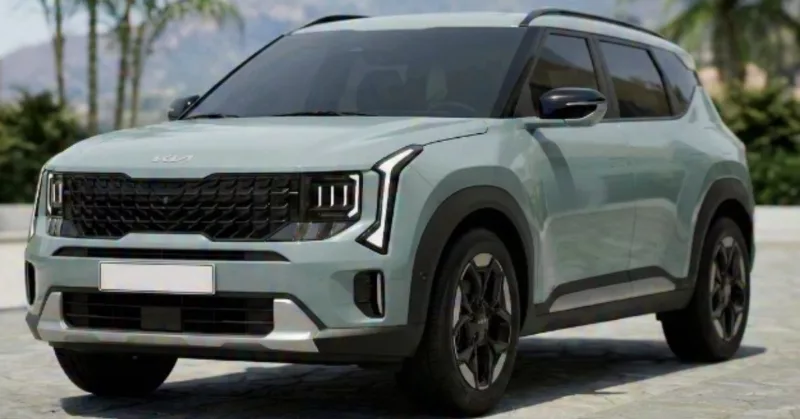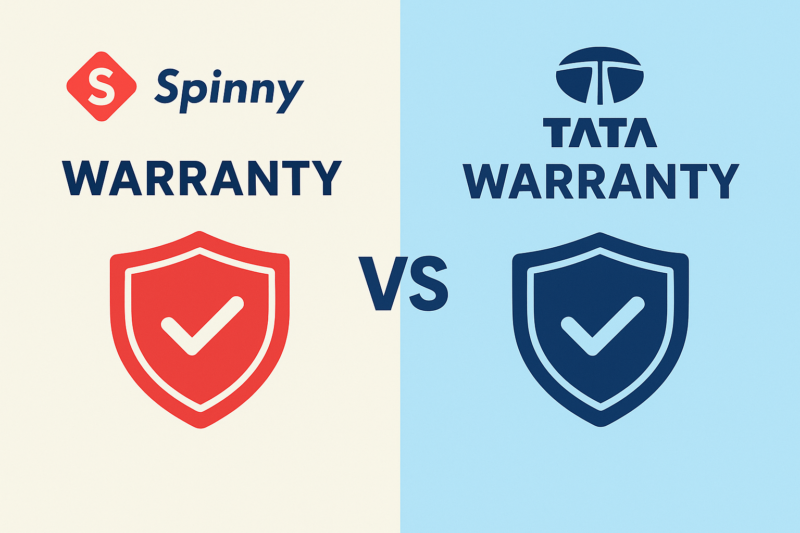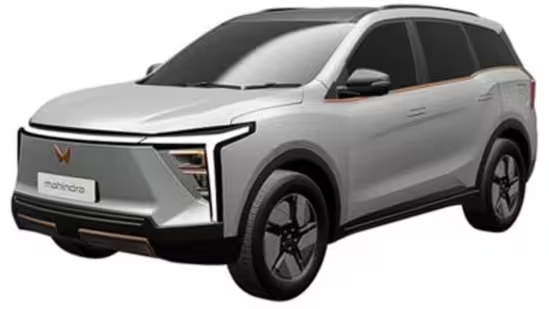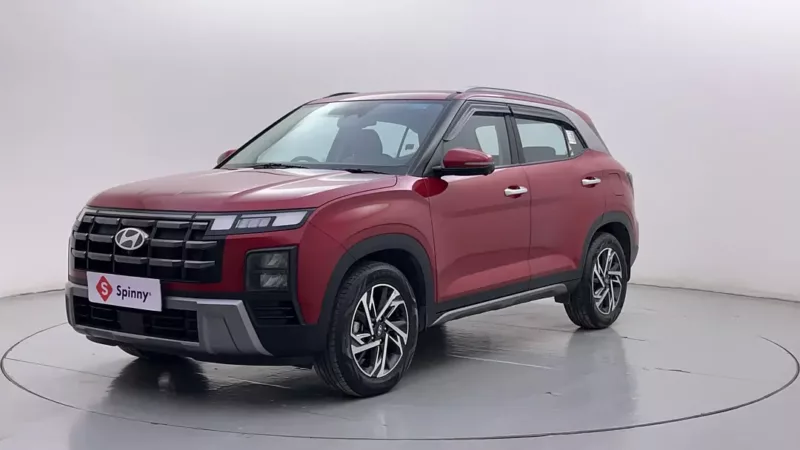The Hyundai Verna has been a popular sedan in India since its launch in 2006. Over the years, it has undergone several facelifts and updates to keep up with the competition. The latest version of the Verna, launched in 2023, boasts a new design and several new features. Walk through the changes made to the design, features, and specifications, and compare the differences between new Hyundai Verna vs old generation Verna.
Hyundai Verna vs Hyundai Verna 2023: Dimensions
| Specifications | Hyundai Verna old gen | Hyundai Verna 2023 |
| Length | 4,440 mm | 4,535 mm |
| Width | 1,729 mm | 1,765 mm |
| Height | 1,475 mm | 1,475 mm |
| Wheelbase | 2,600 mm | 2,670 mm |
| Boot Space | 465 litres | 528 litres |
| Ground Clearance | 165 mm | 165 mm |
The new Verna is longer and wider than the old gen Verna, directly translating to better cabin space. The new Verna also has a longer wheelbase, which offers better legroom. Additionally, the boot space of the 2023 Verna is a sizable upgrade, making it even more practical for carrying luggage. However, both the old gen and the 2023 Verna have the same height and ground clearance. The new Verna edges past each of its rivals in terms of dimensions, in every way, while the old one sat comfortably beneath the Honda City.
The dimensions not only make them look bigger, but the design language plays a part in providing the Verna a unique look as well. Unlike the previous model, which had executive sedan type design language, the new Verna comes with a more angular and sporty design. It gets a slim LED bar up front that covers the width of the vehicle, while the vertical light signatures are intended to spell out the letter “H.” The rear also gets a connecting bar between the two tail lamps.
New Hyundai Verna vs Old Hyundai Verna: Engine and Transmission
| Specifications | Hyundai Verna old gen | Hyundai Verna 2023 |
| Engine Options | 1.0L (turbo) & 1.5L (NA Petrol) & 1.5L Diesel | 1.5L Petrol, 1.5L Turbo Petrol |
| Max Power (PS) | 1.5-litre Petrol – 115 PS 1.5-litre Diesel – 115 PS 1.0L Turbo Petrol – 120 PS | Petrol – 113 PSTurbo Petrol – 156 PS |
| Max Torque (Nm) | 1.5-litre Petrol – 143.8 Nm 1.5-litre Diesel – 250 Nm 1.0L Turbo Petrol – 172 Nm | Petrol – 144 Nm @ 4500 rpmTurbo Petrol – 253 Nm @ 1500-4000 rpm |
| Transmission Options | 5-speed MT & 4-speed AT for Petrol, 6-speed MT & 6-speed AT for Diesel | 6-speed MT & CVT for Petrol, 6-speed MT & 7-speed DCT for Turbo Petrol |
| Mileage (kmpl) | Petrol – 17.7 kmpl (MT) & 15.7 kmpl (AT)Diesel – 24.8 kmpl (MT) & 21.3 kmpl (AT) | Petrol – 17.7 kmpl (MT), 19.1 kmpl (CVT) & 18.1 kmpl (AT)Turbo Petrol – 20.0 kmpl (MT) & 20.6 kmpl (DCT) |
The new Verna certainly scales down the engine options, but not to worry because it now includes a new more potent 1.5 litre turbo petrol engine, which delivers significantly more power and torque than the outgoing 1.0 litre turbo petrol in the old gen Verna.
While the absence of a diesel engine will be felt a lot, the zippy turbo-petrol is a worthy replacement. It compares directly with entry level German luxury cars in terms of power, as it manages to do the 0-100 km/h sprint in about 8.1 seconds, making it the fastest car under Rs 20 lakh. Although having strong performance numbers, this engine is more fuel efficient than a standard petrol engine and achieves nearly class-leading economy.
Moreover, this high-performance turbocharged engine is now more accessible than its predecessor, as it is offered in two different variants instead of the single option available in the previous-generation Verna. The outgoing Verna also had a smaller 1.0-litre turbo petrol on offer, which produced respectable power.
The transmission options are also improved, with the addition of a 7-speed DCT for the turbo petrol engine and a more smooth CVT for the naturally aspirated engine. The new Verna also offers improved fuel efficiency across all engine and transmission options when compared to the older Verna.
New Hyundai Verna vs Old Hyundai Verna: Features and Comfort
| Feature | Hyundai Verna old-gen | Hyundai Verna 2023 |
| Infotainment System | 7-inch Touchscreen Audio System | 10.25-inch Touchscreen Infotainment System with Apple CarPlay & Android Auto |
| Music System | 4 Speakers + 2 Tweeters | 4 Speakers + 2 Tweeters + Subwoofer |
| Climate Control | Automatic | Automatic Dual Zone Climate Control |
| Ventilated Seats | Available | Available |
| Adjustable Steering | Yes | Yes |
| Drive Modes | Not Available | Available (Eco, Comfort & Sport) |
| Instrument Cluster | Analog | Digital |
| Sunroof | Available | Available |
| Adjustable Seats | Manual | Electrically Adjustable |
| Rear AC Vents | Available | Available |
| 60:40 Rear Seat Split | Not Available | Not Available |
| Cruise Control | Available | Available |
To say that the 2023 Verna is loaded to the brim, is an understatement. The facelifted Verna comes with several improved features compared to the old gen Verna. This includes an 10.25-inch touchscreen infotainment system with Apple CarPlay and Android Auto, compared to the smaller 8-inch touchscreen audio system on the old gen. The new Verna also has an automatic dual-zone climate control system, whereas the old gen had a manual climate control system. Other notable new features in the 2023 Verna include ventilated and heated seats, drive modes, a digital instrument cluster, and electrically adjustable seats.
While the Verna is a feature rich car, the sedan also scores well on comfort. While the convenience features certainly up the cabin experience the real comfort degree is measured by the roominess, suspension, NVH levels, and miscellaneous parameters like underthigh support, all of which the old Verna excelled in. However, apart from the new Verna further enhancing this through its bigger dimensions, it also addresses the headspace issue for rear passengers in the old Verna.
New Hyundai Verna vs Old Hyundai Verna: Safety Features
| Feature | Hyundai Verna old gen | Hyundai Verna 2023 |
| GNCAP safety rating | Not rated | Not rated |
| Airbags | 6 | 6 |
| ABS with EBD | Yes | Yes |
| ESC | Yes | Yes |
| Traction control | Yes | Yes |
| Automatic headlamps | Yes (Available on higher variants) | Yes (Standard on all variants) |
| Rain sensing wipers | No | No |
| Hill hold assist | Yes (only with DCT) | Yes (only with DCT) |
| Hill descent control | No | No |
| Rear sensors | Yes | Yes |
| Rear parking camera | Yes | Yes |
| ISOFIX child seat anchor points | Yes | Yes |
| ADAS | No | Yes (includes forward collision warning, lane keep assist, blind spot detection and adaptive cruise control) |
The main change in the 2023 Verna when compared with the old Verna is the addition of ADAS that includes rear cross-traffic warning and avoidance assist, lane keep assist, lane departure warning, driver attention warning, adaptive cruise control with stop and go, high beam assist, lead vehicle departure alert, and forward collision warning and avoidance (including cars, pedestrians, cycles, and junction turning) assist in order to help prevent or mitigate accidents by alerting or assisting the driver in various situations. Moreover, the new Verna gets 6 airbags as standard across all variants, whereas the older Verna got 6 airbags in the top-spec variants only.
ESC, hill start assist, front and rear parking sensors, cornering lighting, ABS with EBD, traction control, automatic headlamps, rain sensing wipers, hill hold assist (only with DCT), and ISOFIX child seat anchor points and tyre pressure monitoring are other safety features on offer. The addition of the standard features would likely improve safety.
New Hyundai Verna vs Old Hyundai Verna: Prices & Variants
| Variant | Hyundai Verna old gen | Hyundai Verna 2023 |
| Base (E) | Rs 9.43 lakh | Rs 10.90 lakh |
| Mid (S) | Rs 10.70 lakh | Rs 13.99 lakh |
| Upper mid (SX) | Rs 12.53-13.68 lakh | Rs 15.17-16.60 lakh |
| Top (SX(O)) | Rs 14.37-15.52 lakh | Rs 17.09-20.25 lakh |
The new Verna is more expensive than the old Verna by Rs 1.59 lakh to Rs 2.20 lakh across variants. This is because the new Verna is bigger, more powerful, more feature-rich and has more standard features across all variants when compared to the old Verna. Moreover, the car is pricier due to the updated engine norms as well.
Summary
In conclusion, the new Verna delivers better value than the old Verna if the buyer is looking for a more spacious, powerful, and feature-loaded sedan with a turbo-petrol engine option and advanced safety features. However, if the buyer is looking for a more affordable and fuel-efficient sedan with a diesel engine option and decent features, then the old Verna might’ve been a better choice, especially since there’s no mass market diesel sedan left in the market. Nevertheless, one can always flock to the used car market to get their hands on a relatively new Verna.




